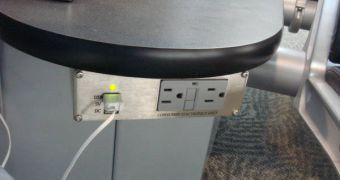Electrical energy is known to be a thing of cables. That is to say, you have a cord going into the toaster, another one in the TV, and a couple more inside the computer. But a new approach to electricity transfer, whose grounds were set at the Massachusetts Institute of Technology, will be able to recharge a cell phone or power up a computer without any cables, for instance, in a short period of time, namely one to two years. The power will be transmitted safely and efficiently through the air, the developers of this new technology say, the BBC News informs.
At the TED Global conference, held in Oxford, the United Kingdom, the Chief Executive of the United States-based enterprise Witricity, Eric Giler, showcased a number of devices, including a cell phone and a television set that were being charged via the new technology. The exec also highlighted the fact that, if the new method caught on, then, in a few years, the world could be spared from the hassles of having to rely on thousands of miles of insecure electrical cables for their appliances, and also that humankind could finally give up the costly and extremely inefficient battery industry.
“There is something like 40 billion disposable batteries built every year for power that, generally speaking, is used within a few inches or feet of where there is very inexpensive power,” Giler said. The largest financial losses, he also mentioned, were recorded while getting “power from where it is created to where it is used.” At TED, the expert proved that a Google G1 phone and an Apple iPhone could easily be charged with the new system, via a clip-on device attached over the battery.
MIT Physicist Marin Soljacic set the basis for this technology, when he created a method of exploiting the principle of “resonance.” Basically, this refers to when two objects resonating on the same frequency exchange electricity directly and highly efficiently, without influencing any third objects in their vicinity. This resonance can also be applied to low-frequency electromagnetic waves, which is exactly what Witricity did in its research.
“In the very early days of electricity before the electric grid was deployed, [Nikola Tesla and Thomas Edison] were very interested in developing a scheme to transmit electricity wirelessly over long distances.” “They couldn't imagine dragging this vast infrastructure of metallic wires across every continent,” Soljacic shared about the origins of the idea. It makes use of the basic fact that “humans and the vast majority of objects around us are non-magnetic in nature.”

 14 DAY TRIAL //
14 DAY TRIAL //